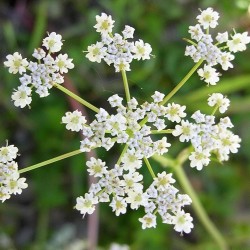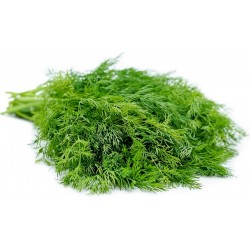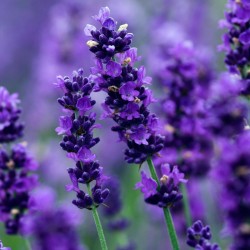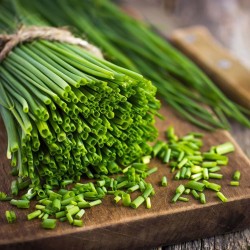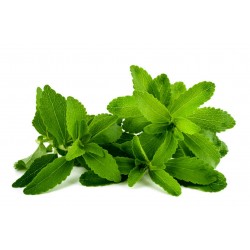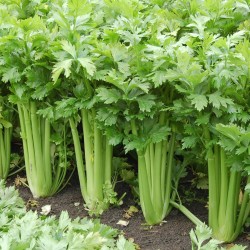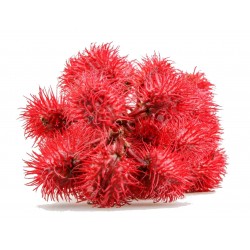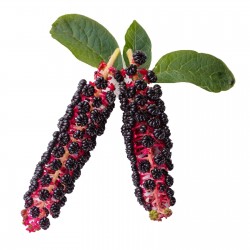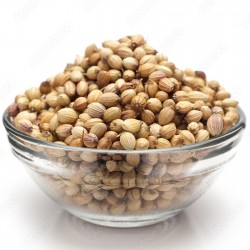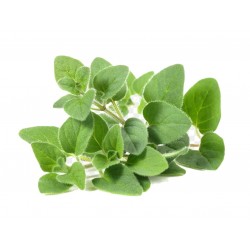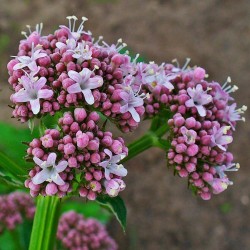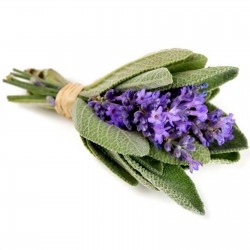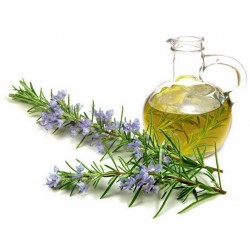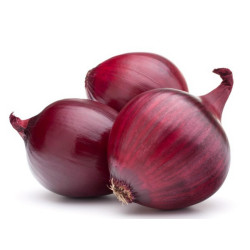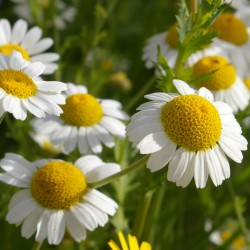
Semena Heřmánek pravý...
Cena
2,45 €
(SKU: MHS 8)
Seeds Gallery EU,
5/
5
<h2><strong>Semena Heřmánek pravý (Matricaria chamomilla)</strong></h2>
<h2><span style="color: #ff0000;"><strong>Cena za balení 8 000 semen (0,5 g).</strong></span></h2>
<div>
<p style="color: #202122; font-size: 14px;"><b>Heřmánek pravý</b><span> </span>(<i>Matricaria chamomilla,</i><span> </span>synonymum<span> </span><i>Matricaria recutita</i>), také<span> </span><b>heřmánek lékařský,</b><span> </span>je jednoletá nebo ozimá<span> </span>léčivá rostlina<span> </span>z čeledi<span> </span>hvězdnicovitých. Hojně se využívá v<span> </span>kosmetice<span> </span>a<span> </span>léčitelství, v<span> </span>aromaterapii<span> </span>i<span> </span>homeopatii. Je to jedna z nejoblíbenějších a velmi dlouho známých léčivých bylin s prakticky univerzálním účinkem.<sup id="cite_ref-:3_1-0" class="reference">[1]</sup></p>
<h2 style="color: #000000; font-size: 1.5em;"><span class="mw-headline" id="Názvosloví_a_systematika">Názvosloví a systematika</span></h2>
<h3 style="color: #000000; font-size: 1.2em;"><span id="Lidov.C3.A9_n.C3.A1zvy_a_etymologie"></span><span class="mw-headline" id="Lidové_názvy_a_etymologie">Lidové názvy a etymologie</span></h3>
<p>Lidově nazýván<span> </span><i>rumánek, marunka, harmaníček či kamilka.<span> </span></i>Odborný název pochází pravděpodobně z latinského slova<span> </span><i>mater</i><span> </span>(matka), resp.<span> </span><i>matrix</i>, tj. děloha, zřejmě podle dutého květního lůžka nebo podle toho, že je bylinou užívanou též k léčení ženských nemocí a hygieně.<sup id="cite_ref-:2_2-0" class="reference">[2]</sup><span> </span>Český výraz<span> </span><i>heřmánek</i><span> </span>potom z latinského<span> </span><i>armanilla</i><span> </span>s přidáním počátečního „h-“ (staročesky ještě<span> </span><i>ormánek</i>).<sup id="cite_ref-3" class="reference">[3]</sup></p>
<h3 style="color: #000000; font-size: 1.2em;"><span id="Systematick.C3.A9_za.C5.99azen.C3.AD"></span><span class="mw-headline" id="Systematické_zařazení">Systematické zařazení</span></h3>
<p>V rámci čeledi hvězdnicovitých patří rod<span> </span><i>Matricaria</i><span> </span>do její nejrozsáhlejší podčeledi<span> </span><i>Asteroideae</i><span> </span>a v ní dále do<span> </span>tribu<span> </span><i>Anthemidae.</i><span> </span>V něm podle molekulárních studií spoluvytváří<span> </span>monofyletický<span> </span>subtribus<span> </span><i>Matricariinae</i><span> </span>společně rody<span> </span><i>Achillea</i><span> </span>(řebříček) v rozšířeném pojetí (včetně rodů<span> </span><i>Leucocyclus</i><span> </span>a<span> </span><i>Otanthus</i>),<span> </span><i>Anacyclus</i><span> </span>a<span> </span><i>Heliocauta</i>.<br /><br /></p>
<p style="color: #202122; font-size: 14px;">Je to jednoletá nebo ozimá, 15 až 50<span> </span>cm<span> </span>vysoká, příjemně vonící<span> </span>bylina.<span> </span>Lodyha<span> </span>je přímá nebo vystoupaná, lysá, příp. pod úbory řídce chlupatá a zpravidla bohatě větvená.<span> </span>Listy<span> </span>jsou řídké, střídavě přisedlé, 3–7 cm dlouhé, 2–3× zpeřené v drobné čárkovité až niťovité úkrojky. Kořen je krátký, vřetenovitého tvaru.<sup id="cite_ref-:1_5-0" class="reference">[5]</sup></p>
<p style="color: #202122; font-size: 14px;">Květy jsou jako u ostatních hvězdnicovitých rostlin drobné, uspořádané do<span> </span>úborů<span> </span>o průměru 10–25 mm vyrůstajících na 3–10 cm dlouhých stopkách; úbory jsou uspořádány v řídkém<span> </span>vrcholičnatém<span> </span>květenství a na jedné rostlině jich může být až 200. V úboru jsou květy dvojího druhu: bílé jazykovité květy s 6–9 mm dlouhou<span> </span>ligulou, kterých je nejčastěji 15, jsou uspořádány po obvodu; brzy po rozvití úboru se sklánějí směrem dolů. V terči úboru jsou květy žluté, trubkovité, pětičetné a jsou umístěny na kuželovitě vyklenutém<span> </span>květním lůžku, které je uvnitř duté a na povrchu je bez plevek.<span> </span>Zákrov<span> </span>je polokulovitý, jeho<span> </span>listeny<span> </span>jsou víceřadě uspořádané, světle zelené s tmavší hnědou žilkou uprostřed, tupě podlouhlé, s širokým suchomázdřitým lemem.<sup id="cite_ref-:1_5-1" class="reference">[5]</sup><sup id="cite_ref-:0_6-0" class="reference">[6]</sup></p>
<p style="color: #202122; font-size: 14px;">Heřmánek kvete od května či června do srpna až září; opylován je hmyzem, docházet může i k<span> </span>autogamii.<span> </span>Plodem<span> </span>je drobná neochmýřená<span> </span>nažka, která je asi 1<span> </span>mm<span> </span>dlouhá, lehce zakřivená a smáčklá, na bázi zúžená, na vnitřní straně s 4–5 nízkými žebry.<sup id="cite_ref-:1_5-2" class="reference">[5]</sup><span> </span>Semena jsou běžně šířena živočichy, včetně člověka.</p>
<p style="color: #202122; font-size: 14px;">Ploidie<span> </span>druhu je 2n=18.</p>
<h3 style="color: #000000; font-size: 1.2em;"><span class="mw-headline" id="Možnost_záměny">Možnost záměny</span></h3>
<p style="color: #202122; font-size: 14px;">Heřmánek pravý může být zaměněn za podobný<span> </span>heřmánek římský, který je ovšem též léčivý, nebo za neúčinné druhy<span> </span>heřmánkovec nevonný<span> </span>nebo<span> </span>rmen rolní. Heřmánek pravý jde poznat podle typické intenzivní vůně a žlutého vyklenutého středu květů. Květy heřmánkovce ani rmenu nemají charakteristickou vůni, žádný z nich také na rozdíl od heřmánku pravého nemá vyklenuté a duté květní lůžko.</p>
<h2 style="color: #000000; font-size: 1.5em;"><span class="mw-headline" id="Ekologické_nároky_a_rozšíření">Ekologické nároky a rozšíření</span></h2>
<p style="color: #202122; font-size: 14px;">Heřmánek pravý je<span> </span>hemikryptofyt<span> </span>nebo častěji<span> </span>terofyt, který roste na ruderálních stanovištích a<span> </span>rumištích, okolo cest (včetně solených okrajů silnic), na mezích, úhorech a<span> </span>slaniskách<span> </span>i jako polní plevel.<sup id="cite_ref-:0_6-1" class="reference">[6]</sup><span> </span>Vyhovují mu půdy písčité, hlinité i jílovité, nepodmáčené, mírně kyselé nebo neutrální, nevápnité. Větší nároky má na světlo.<sup id="cite_ref-:2_2-1" class="reference">[2]</sup><span> </span>Ve<span> </span>fytocenologii<span> </span>je<span> </span>diagnostickým druhem<span> </span>svazu<span> </span><i>Scleranthion annui (</i>synonymum<span> </span><i>Aphanion arvensis,</i><span> </span>plevelová vegetace obilnin na minerálně chudých půdách), drobnější<span> </span>halofilní<span> </span>morfotyp označovaný jako<span> </span><i>Matricaria recutita</i><span> </span>f.<span> </span><i>bayeri</i><span> </span>pak svazu suchých slaniskových trávníků<span> </span><i>Puccelinion limosae</i>. Jako léčivka je často pěstován v polních kulturách.<sup id="cite_ref-:1_5-4" class="reference">[5]</sup><span> </span>Je<span> </span>dlouhodenní rostlinou, jeho semena klíčí na světle.</p>
<p style="color: #202122; font-size: 14px;">Původním druhem je v jižní Evropě, areál jeho rozšíření zahrnuje téměř celou<span> </span>Evropu<span> </span>a západní a Střední<span> </span>Asii<sup id="cite_ref-:0_6-2" class="reference">[6]</sup>, místy se vyskytuje i v Irsku, ve Skandinávii a v mírnějších oblastech<span> </span>Sibiře<span> </span>až po Dálný východ. Zavlečen byl do<span> </span>Makaronésie, obou Amerik, do Austrálie a na Nový Zéland.<sup id="cite_ref-7" class="reference">[7]</sup><span> </span>V České republice je zdomácnělým<span> </span>archeofytem.<sup id="cite_ref-:2_2-2" class="reference">[2]</sup><span> </span>Vyskytuje se zde na celém území, nejhojněji v termofytiku a v nižších polohách mezofytika, ve vyšších polohách a v oblastech s vápenitými půdami pouze přechodně, především podél komunikací.<sup id="cite_ref-:1_5-5" class="reference">[</sup></p>
<h2 style="color: #000000; font-size: 1.5em;"><span class="mw-headline" id="Obsahové_látky">Obsahové látky</span></h2>
<p style="color: #202122; font-size: 14px;">Dosud bylo v heřmánku zjištěno více než 120 druhů sekundárních metabolitů s potenciální farmakologickou účinností. Aktivními látkami jsou<span> </span>silice<span> </span>s modravými azuleny a proazuleny,<span> </span>seskviterpeny<span> </span>a četné<span> </span>flavonoidy,<span> </span>hořčiny,<span> </span>taniny,<span> </span>mastné kyseliny<span> </span>a<span> </span>sliz.<sup id="cite_ref-:3_1-1" class="reference">[1]</sup>Jmenovitý soupis látek zahrnuje např.<span> </span><b>terpeny</b><span> </span>α-bisabolol,<span> </span>apigenin,<span> </span>azulen,<span> </span>β-karyophylen,<span> </span>bisabolen,<span> </span>borneol,<span> </span><i>trans</i>-α-farnesen,<span> </span><i>trans</i>-β-farnesen,<span> </span>farnesol,<span> </span>geraniol,<span> </span>guajazulen,<span> </span>chamazulen,<span> </span>chamomillol,<span> </span>karyofylen,<span> </span>kemferol,<span> </span>levonenol,<span> </span>matricin,<span> </span>matrikarin,<span> </span>thujon,<span> </span><b>aromatické kyseliny</b><span> </span>kyselinu salicylovou,<span> </span>kyselinu 2,4-dihydroxybenzoovou,<span> </span>kyselinu 2,5-dihydroxybenzoovou,<span> </span>kyselinu 3,4-dihydroxyskořicovou,<span> </span>kyselinu 4-methoxybenzoovou,<span> </span><b>kumariny</b><span> </span>kyselinu kumarovou,<span> </span>umbeliferon,<span> </span>herniarin,<span> </span>kumarin,<span> </span><b>steroidy</b><span> </span>sitosterol,<span> </span>stigmasterol,<span> </span><b>flavonoidy</b><span> </span>apigenin,<span> </span>luteolin,<span> </span>kvercitin,<span> </span>kvercetrin,<span> </span><b>sacharidy</b><span> </span>fruktózu,<span> </span>glukózu,<span> </span>rhamnózu,<span> </span>xylózu,<span> </span><b>glykosidy</b><span> </span>apigenin-7-(6"O-acetyl)glukosid,<span> </span>apigenin-7-glukosid,<span> </span>apigenin-7-rutinosid,<span> </span>sitosterol-glukosid,<span> </span>luteolin-7-glukosid,<span> </span>luteoloin-7-rhamnoglukosid,<span> </span>kvercetin-3-O-galaktosid,<span> </span>kvercetin-7-glukosid,<span> </span><b>vitaminy</b><span> </span>kyselinu askorbovou,<span> </span>niacin<span> </span>a<span> </span>thiamin.</p>
<h2 style="color: #000000; font-size: 1.5em;"><span class="mw-headline" id="Použití">Použití</span></h2>
<h3 style="color: #000000; font-size: 1.2em;"><span id="Lidov.C3.A9_a_tradi.C4.8Dn.C3.AD_l.C3.A9.C4.8Ditelstv.C3.AD"></span><span class="mw-headline" id="Lidové_a_tradiční_léčitelství">Lidové a tradiční léčitelství</span></h3>
<div class="thumb tleft" style="color: #202122; font-size: 14px;">
<div class="thumbinner" style="font-size: 13.16px;"><img alt="" src="https://upload.wikimedia.org/wikipedia/commons/thumb/0/05/Flores_Matricariae_by_Danny_S._-_002.JPG/220px-Flores_Matricariae_by_Danny_S._-_002.JPG" decoding="async" width="220" height="147" class="thumbimage" srcset="//upload.wikimedia.org/wikipedia/commons/thumb/0/05/Flores_Matricariae_by_Danny_S._-_002.JPG/330px-Flores_Matricariae_by_Danny_S._-_002.JPG 1.5x, //upload.wikimedia.org/wikipedia/commons/thumb/0/05/Flores_Matricariae_by_Danny_S._-_002.JPG/440px-Flores_Matricariae_by_Danny_S._-_002.JPG 2x" data-file-width="3463" data-file-height="2321" />
<div class="thumbcaption" style="font-size: 12.3704px;">
<div class="magnify"></div>
Sušená heřmánková droga</div>
</div>
</div>
<p style="color: #202122; font-size: 14px;">Heřmánek pravý je jako léčivá rostlina užíván již po tisíciletí; byl znám již ve starém Egyptě, v antickém Řecku i Římě. U Anglosasů byl považován za jednu z devíti posvátných bylin darovaných člověku od Boha.<sup id="cite_ref-:4_8-1" class="reference">[8]</sup><span> </span>Sbírány jsou rozkvetlé úbory krátce po rozvití (<i>Flos chamomillae)</i><sup id="cite_ref-:3_1-2" class="reference">[1]</sup>, které se suší a užívají ve formě<span> </span>čajů<span> </span>a<span> </span>odvarů, přidávají se do ozdravných koupelí a do polštářů pro lepší spánek.<sup id="cite_ref-:5_9-0" class="reference">[9]</sup><span> </span>Jejich výpary lze též inhalovat. Zevně se užívá heřmánkový olej a nejrůznější masti.</p>
<div class="thumb tright" style="color: #202122; font-size: 14px;">
<div class="thumbinner" style="font-size: 13.16px;"><img alt="" src="https://upload.wikimedia.org/wikipedia/commons/thumb/6/6a/GermanChamomileEssOil.png/145px-GermanChamomileEssOil.png" decoding="async" width="145" height="235" class="thumbimage" srcset="//upload.wikimedia.org/wikipedia/commons/thumb/6/6a/GermanChamomileEssOil.png/218px-GermanChamomileEssOil.png 1.5x, //upload.wikimedia.org/wikipedia/commons/thumb/6/6a/GermanChamomileEssOil.png/290px-GermanChamomileEssOil.png 2x" data-file-width="791" data-file-height="1280" />
<div class="thumbcaption" style="font-size: 12.3704px;">
<div class="magnify"></div>
Heřmánkový esenciální olej s typickou modrou barvou</div>
</div>
</div>
<p style="color: #202122; font-size: 14px;">Heřmánková droga má celou škálu léčivých účinků. Působí jako<span> </span>antiflogistikum<span> </span>k léčbě<span> </span>zánětů, například očních spojivek nebo pohlavního ústrojí, při léčbě infikovaných sliznic a alergických reakcí na kůži; jako<span> </span>karminativum<span> </span>při žaludečních a střevních potížích, žaludečních a dvanáctníkových vředech, působí též proti nadýmání. Coby<span> </span>spasmolytikum<span> </span>uvolňuje<span> </span>křeče<span> </span>a tiší bolesti. Užívá se při bronchiálním astmatu a nachlazení, jako<span> </span>diaforetikum<span> </span>(zvyšuje pocení), pomáhá při hojení ran, popálenin a omrzlin. Je účinný proti některým<span> </span>stafylokokům<span> </span>a<span> </span>streptokokům, proti mikrobům<span> </span><i>Bacillus subtillis</i>,<span> </span><i>Escherichia coli</i><span> </span>nebo proti infekcím způsobeným kvasinkou<span> </span><i>Candida albicans</i>.<sup id="cite_ref-:3_1-3" class="reference">[1]</sup><span> </span>Užívá se též na poruchy menstruace, proti hemoroidům, k umývání vlasů, na obklady a koupele k celkové harmonizaci a regeneraci organismu.<sup id="cite_ref-:5_9-1" class="reference">[9]</sup><span> </span>Snižuje úzkost.<sup id="cite_ref-10" class="reference">[10]</sup></p>
<p style="color: #202122; font-size: 14px;">Při dlouhodobém užívání může vysušovat<span> </span>sliznice, předávkování způsobuje<span> </span>nauseu. U citlivějších osob může způsobit alergickou reakci.<sup id="cite_ref-:3_1-4" class="reference">[1]</sup><span> </span>Je vhodný pro děti, a to už od kojeneckého věku; pomáhá při dětské kolice.<sup id="cite_ref-:4_8-2" class="reference">[8]</sup><span> </span>Mohou jej užívat i těhotné a kojící ženy.<sup id="cite_ref-11" class="reference">[11]</sup></p>
<h3 style="color: #000000; font-size: 1.2em;"><span id="Farmaceutick.C3.BD_a_kosmetick.C3.BD_pr.C5.AFmysl"></span><span class="mw-headline" id="Farmaceutický_a_kosmetický_průmysl">Farmaceutický a kosmetický průmysl</span></h3>
<p style="color: #202122; font-size: 14px;">Destilované heřmánkové silice a esenciální oleje se ve velké míře využívají i ve farmaceutickém a kosmetickém průmyslu. Podle statistik je heřmánek (resp. jeho sušené květy a modré oleje) pátou nejobchodovanější bylinou na světě; k největším světovým producentům patří Maďarsko, Polsko, Německo, Argentina a do svého rozpadu též Československo.<sup id="cite_ref-:4_8-3" class="reference">[8]</sup><span> </span>Přidává se do šampónů, parfémů, kosmetických krémů, mýdel, toaletních vod, zubních past, masážních olejů a mnoha farmaceutických přípravků včetně likérů.</p>
</div>
<div>
<table cellspacing="0" cellpadding="0" border="1">
<tbody>
<tr>
<td colspan="2" width="100%" valign="top">
<p><span style="color: #008000;"><strong>Sowing Instructions</strong></span></p>
</td>
</tr>
<tr>
<td valign="top" nowrap="nowrap">
<p><span style="color: #008000;"><strong>Propagation:</strong></span></p>
</td>
<td valign="top">
<p><span style="color: #008000;">Seeds</span></p>
</td>
</tr>
<tr>
<td valign="top" nowrap="nowrap">
<p><span style="color: #008000;"><strong>Pretreat:</strong></span></p>
</td>
<td valign="top">
<p><span style="color: #008000;">0</span></p>
</td>
</tr>
<tr>
<td valign="top" nowrap="nowrap">
<p><span style="color: #008000;"><strong>Stratification:</strong></span></p>
</td>
<td valign="top">
<p><span style="color: #008000;">0</span></p>
</td>
</tr>
<tr>
<td valign="top" nowrap="nowrap">
<p><span style="color: #008000;"><strong>Sowing Time:</strong></span></p>
</td>
<td valign="top">
<p><span style="color: #008000;">all year round </span></p>
</td>
</tr>
<tr>
<td valign="top" nowrap="nowrap">
<p><span style="color: #008000;"><strong>Sowing Depth:</strong></span></p>
</td>
<td valign="top">
<p><span style="color: #008000;">Needs Light to germinate! Just sprinkle on the surface of the substrate + gently press</span></p>
</td>
</tr>
<tr>
<td valign="top" nowrap="nowrap">
<p><span style="color: #008000;"><strong>Sowing Mix:</strong></span></p>
</td>
<td valign="top">
<p><span style="color: #008000;">Coir or sowing mix + sand or perlite</span></p>
</td>
</tr>
<tr>
<td valign="top" nowrap="nowrap">
<p><span style="color: #008000;"><strong>Germination temperature:</strong></span></p>
</td>
<td valign="top">
<p><span style="color: #008000;">18-20 ° C</span></p>
</td>
</tr>
<tr>
<td valign="top" nowrap="nowrap">
<p><span style="color: #008000;"><strong>Location:</strong></span></p>
</td>
<td valign="top">
<p><span style="color: #008000;">bright + keep constantly moist not wet</span></p>
</td>
</tr>
<tr>
<td valign="top" nowrap="nowrap">
<p><span style="color: #008000;"><strong>Germination Time:</strong></span></p>
</td>
<td valign="top">
<p><span style="color: #008000;">1 week</span></p>
</td>
</tr>
<tr>
<td valign="top" nowrap="nowrap">
<p><span style="color: #008000;"><strong>Watering:</strong></span></p>
</td>
<td valign="top">
<p><span style="color: #008000;">Water regularly during the growing season</span></p>
</td>
</tr>
<tr>
<td valign="top" nowrap="nowrap">
<p><span style="color: #008000;"><strong> </strong></span></p>
</td>
<td valign="top">
<p><br /><span style="color: #008000;"><em>Copyright © 2012 Seeds Gallery - Saatgut Galerie - Galerija semena. </em><em>All Rights Reserved.</em><em></em></span></p>
</td>
</tr>
</tbody>
</table>
</div>
<script src="//cdn.public.n1ed.com/G3OMDFLT/widgets.js"></script>
MHS 8





